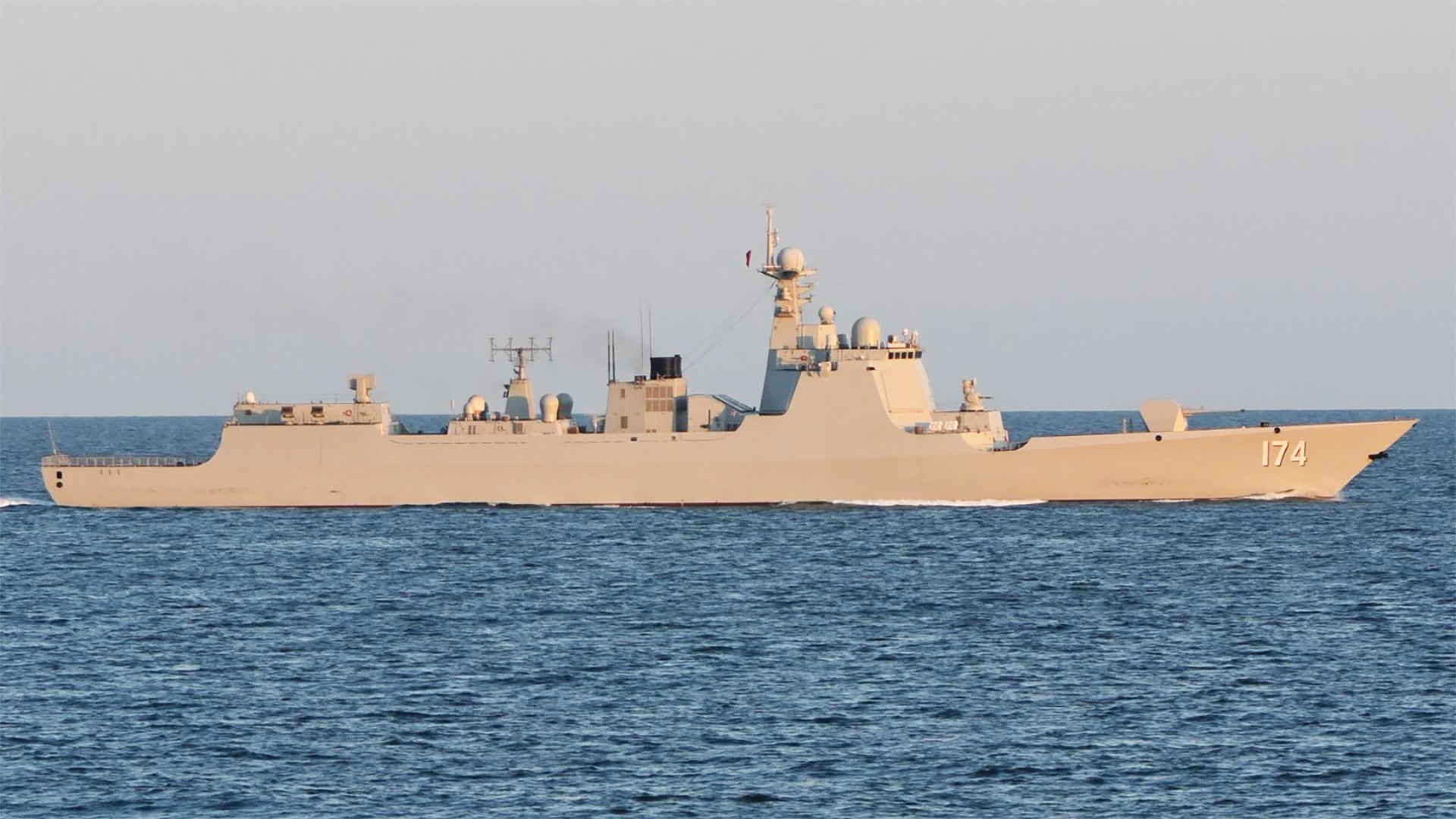The already tense and crowded Baltic Sea is about to get far more so in the coming weeks. As we reported on Monday, roughly a dozen ships from Russia’s Northern Fleet, including the country’s only operational nuclear powered Kirov class battlecruiser and Typhoon class ballistic missile submarine—the largest submarine ever built—are set to enter the body of water in the coming days to attend a naval parade in St. Petersburg on July 30th. In addition to these vessels, as well ships from Russia’s sizable Baltic Fleet, China is sending a naval task force into the Baltic Sea for drills with their Russian counterparts.
As of now, the People’s Liberation Army Navy (PLAN) task force will include at least three ships. The Type 52D destroyer Hefei, the Type 054A guided missile frigate Yuncheng, and the supply ship Luoma Lake are known to be enroute to the Baltic Sea now. Until China’s massive Type 055 destroyer is operational, the Type 052D remains the most capable surface combatant in the PLAN’s inventory, and the Type 054A is the most advanced frigate in China’s naval arsenal as well.
The trio was intercepted by the Royal Navy’s Type 23 Duke Class frigate HMS Richmond (F239) as they passed through the English Channel. Once the ships made their way into the North Sea, the Royal Netherlands Navy began trailing them.
The Chinese flotilla was active earlier in the month in the eastern Mediterranean, executing remote drills which included live-fire operations. Now it appears that another three PLAN ships are likely to venture into the Black Sea—another tense body of water where NATO vessels have had a strong presence recently. It is unclear if the Chinese destroyer, frigate and replenishment ship that have dropped anchor in Istanbul will also conduct drills with Russia’s naval forces if they do indeed travel north, but it is possible, if not probable.
If the ships enter into the Black Sea, it will be the first time that China has fielded ships in both European bodies of water, the Black Sea and the Baltic Sea, simultaneously. It would also be a major bolstering of Russia’s already formidable Black Sea Fleet. The message China will be sending to NATO members and other countries that ring the enclosed body of water will also be dubious at best, and threatening at worst.
The ships heading to the Baltic Sea are set to arrive in the Russian enclave of Kaliningrad on June 21st, with the Russian-Chinese naval exercise dubbed “Joint Sea” slated to kick off on July 24th and run through the end of the month. This is precisely the same time window in which Russian naval assets and aircraft will be amassing for a large scale naval parade in St. Petersburg. In addition, Russia will also begin large-scale ground exercises along the Finnish border during this same time period.
This much Russian-aligned naval power in the Baltic Sea at one time is unheard of, at least in the post Cold War era, and nuclear ballistic missile submarines—even ones used for primarily for testing purposes like the Dmitry Donskoy—don’t call on the Baltic Sea, then or now. With this in mind, NATO will be extremely interested in watching the Russians and the Chinese operate together, not to mention the need to monitor all the unique Russian assets being brought into the region. Considering the parade is being paired with exercises in multiple domains, the whole area will be on high alert, and the compact nature of the airspace and waterways in the area could lead to some tense encounters.
During BALTOPS exercises last June, Russian Su-27s photo-bombed an aerial formation photo op of NATO planes. During the same period of time, NATO alert aircraft intercepted the Russian defense minister’s plane, only to have Su-27s show up and put themselves between the F-16s and the VIP military transport. Russia’s practice of buzzing NATO ships and chasing reconnaissance aircraft operating in the area is also well documented.
In other words, expect not only tense times, but also the unexpected on, over, and near the Baltic Sea in the weeks to come.
China’s naval presence in Northern Europe alongside its Russian allies is also yet another sign of Beijing’s transformation from a regional military power to an international one. Exercises with Russian naval forces are nothing new for the Chinese, in fact the Russian Navy joined the PLAN for joint “island seizing drills” in the South China Sea just last year. The exercise drew concern from the US and many in the region considering China’s highly disputed and numerous territorial claims.
The PLAN’s deployments to the Baltic Sea, the Mediterranean, and possibly the Black Sea are bolstered by China’s first major overseas naval facility that has just become operational in Djibouti. The facility will work as a strategic artery to assist in long-range and more persistent deployments to the Indian Ocean, the Middle East and deep into the western hemisphere.
Contact the author: Tyler@thedrive.com
